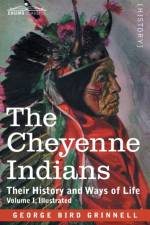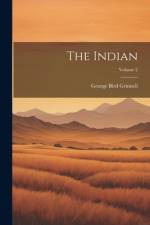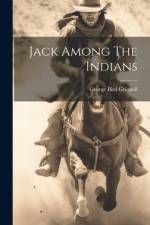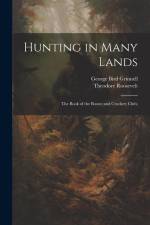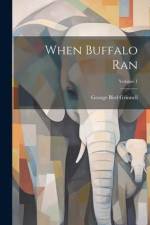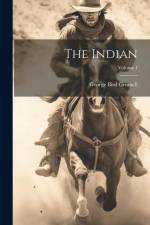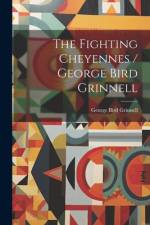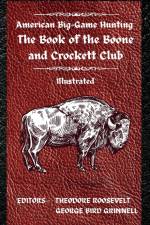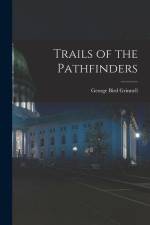Bøger af George Bird Grinnell
-
- Bog
- 322,95 kr.
-
182,95 kr. This classic work of American natural history provides a comprehensive overview of the plants and animals of the American West as observed by George Bird Grinnell. Featuring detailed plate illustrations and descriptions of the flora and fauna of the region, this book is a must-read for anyone interested in American ecosystems.This work has been selected by scholars as being culturally important, and is part of the knowledge base of civilization as we know it.This work is in the "public domain in the United States of America, and possibly other nations. Within the United States, you may freely copy and distribute this work, as no entity (individual or corporate) has a copyright on the body of the work.Scholars believe, and we concur, that this work is important enough to be preserved, reproduced, and made generally available to the public. We appreciate your support of the preservation process, and thank you for being an important part of keeping this knowledge alive and relevant.
- Bog
- 182,95 kr.
-
182,95 kr. A novel set in the American West during the 19th century, this book tells the story of Thomas Westbrook, a trapper and trader who lives among the Native Americans. The novel provides a valuable perspective on the interaction between Native Americans and European settlers, as well as offering vivid descriptions of the landscapes and natural wonders of the West.This work has been selected by scholars as being culturally important, and is part of the knowledge base of civilization as we know it.This work is in the "public domain in the United States of America, and possibly other nations. Within the United States, you may freely copy and distribute this work, as no entity (individual or corporate) has a copyright on the body of the work.Scholars believe, and we concur, that this work is important enough to be preserved, reproduced, and made generally available to the public. We appreciate your support of the preservation process, and thank you for being an important part of keeping this knowledge alive and relevant.
- Bog
- 182,95 kr.
-
327,95 kr. This is a novel about a young man named Jack who experiences adventure and danger during his travels among Native American tribes in the American West.This work has been selected by scholars as being culturally important, and is part of the knowledge base of civilization as we know it.This work is in the "public domain in the United States of America, and possibly other nations. Within the United States, you may freely copy and distribute this work, as no entity (individual or corporate) has a copyright on the body of the work.Scholars believe, and we concur, that this work is important enough to be preserved, reproduced, and made generally available to the public. We appreciate your support of the preservation process, and thank you for being an important part of keeping this knowledge alive and relevant.
- Bog
- 327,95 kr.
-
258,95 kr. - Bog
- 258,95 kr.
-
248,95 - 363,95 kr. - Bog
- 248,95 kr.
-
308,95 - 418,95 kr. - Bog
- 308,95 kr.
-
178,95 kr. - Bog
- 178,95 kr.
-
338,95 kr. - Bog
- 338,95 kr.
-
338,95 kr. - Bog
- 338,95 kr.
-
313,95 - 418,95 kr. - Bog
- 313,95 kr.
-
258,95 kr. "American Big-Game Hunting: The Book of the Boone and Crockett Club" is a captivating and authoritative volume that delves deep into the rich history, daring adventures, and conservation efforts of big-game hunting in North America. Named after two legendary figures in American hunting lore, Daniel Boone and Theodore Roosevelt, the Boone and Crockett Club has played a pivotal role in shaping the landscape of wildlife conservation and responsible hunting practices.This meticulously crafted book serves as both a celebration of the adventurous spirit of American hunters and an informative guide to understanding the club's enduring legacy. Throughout its pages, readers are taken on an enthralling journey, showcasing the challenges, triumphs, and contributions of hunters and conservationists who have dedicated themselves to preserving the continent's natural heritage.Within its chapters, readers will discover riveting tales of legendary hunts, each one filled with suspense, bravery, and the raw beauty of the American wilderness. From the rugged mountains of the Rockies to the vast expanses of the Great Plains, the book recounts thrilling encounters with majestic species such as bison, elk, grizzly bears, moose, and mule deer.Yet, "American Big-Game Hunting" goes beyond mere storytelling, as it presents the profound influence of the Boone and Crockett Club on the ethical and sustainable aspects of hunting. The club's principles of fair chase and conservation have guided hunters to embrace a deep respect for wildlife and their habitats, promoting the idea that hunting should be more about stewardship and less about mere sport.Moreover, the book addresses the critical role played by the Boone and Crockett Club in advocating for the establishment of national parks and wildlife refuges, as well as the development of scientific wildlife management practices. The club's commitment to data-driven research and conservation has been pivotal in safeguarding the future of North America's diverse big-game species.Visually stunning, "American Big-Game Hunting" features a collection of breathtaking photographs that capture the essence of the wild landscapes and the majesty of the animals that roam them. From vintage black-and-white images of early expeditions to vivid, full-color depictions of contemporary hunts, the illustrations bring the narrative to life, drawing readers further into the world of big-game hunting and conservation.In conclusion, "American Big-Game Hunting: The Book of the Boone and Crockett Club" stands as a timeless tribute to the adventurous spirit of American hunters, the beauty of North America's wildlife, and the invaluable efforts made by the Boone and Crockett Club to preserve the continent's natural heritage for generations to come. It is an essential read for anyone passionate about hunting, conservation, and the enduring relationship between humans and the wild.
- Bog
- 258,95 kr.
-
308,95 - 413,95 kr. - Bog
- 308,95 kr.
-
363,95 - 468,95 kr. - Bog
- 363,95 kr.

